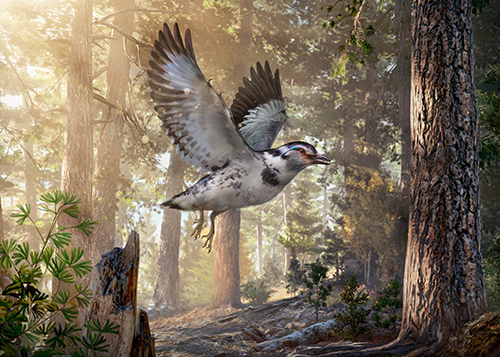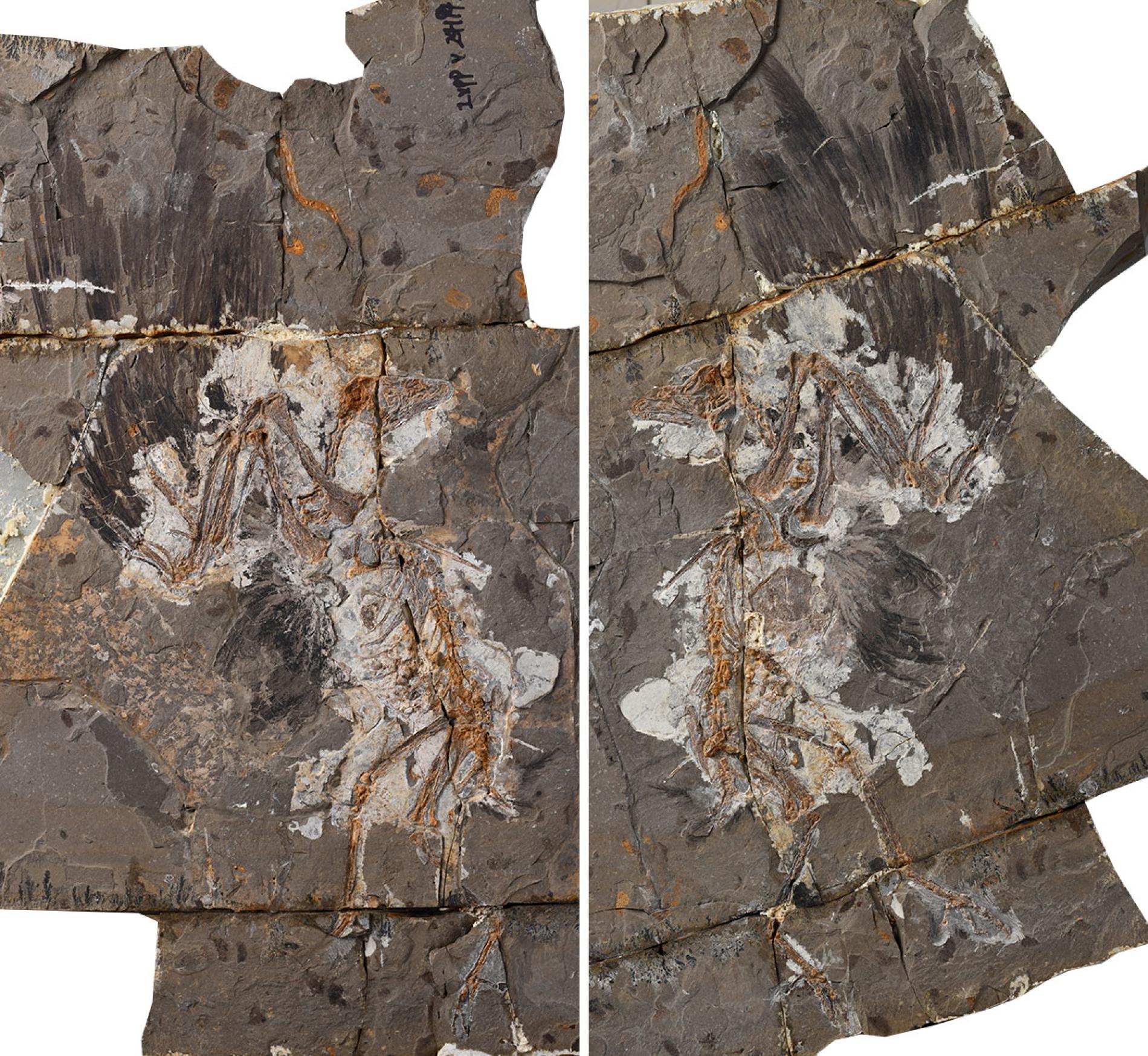'Messy' New Species of Dinosaur-Era Bird Discovered
Paleontologists in China have discovered a new species of fossil bird that they say reveals a pivotal point in the evolution of flight, when birds had lost the long bony tail seen in dinosaurs such as Tyrannosaurus and the early bird Archaeopteryx, but before they had developed the fan of feathers on a shortened tail seen in flying birds today.
The 127-million-year-old species, which they have named Jinguofortis perplexus, retains other features of its dinosaur ancestors, such as claws on the fingers of its wings, a jaw with tiny teeth rather than a beak, and a fused shoulder girdle. That last trait is seemingly poorly adapted to flight, hence the name“perplexus.”
Discovered in the northeastern Chinese province of Hebei, Jinguofortis lived in a dense forested environment with scattered lakes, which characterized this region during the early Cretaceous. About the size of a modern crow, the species had wide, short wings that may have aided maneuverability between the trees.
“Generally, we think of the modern flight apparatus of living birds as having evolved through the gradual accumulation of refinements to their feathers, muscles, and bones over millions of years,” says Min Wang at the Institute of Vertebrate Paleontology and Paleoanthropology of the Chinese Academy of Science in Beijing, whose team describes the fossil this week in the journal PNAS.
“However,” Wang says, “this new bird fossil shows that the evolution of flight was much more messy.”
Fused Shoulder Bone
Jinguofortis is “one of the most important fossil birds found in recent years,” according to Steve Brusatte, a paleontologist at the University of Edinburgh in the U.K. who was one of the reviewing editors of the paper.
That’s because it’s one of the earliest and most primitive members of the more modern group of birds with shortened tails, or pygostyles, and so it helps us “understand how early birds changed their tails from the long, straight, skinny tails of their dinosaur ancestors into the little, fused, stubby tails they have today,” Brusatte says.
But perhaps the most interesting aspect of the fossil is the shoulder girdle, the experts say, which resembles that of non-avian dinosaurs rather than birds. Modern birds usually have two bones, the scapula and coracoid, that allow flexibility for flapping flight. But Jinguofortis’ shoulder is fused into a single bone, the scapulocoracoid.
This would be a “very unusual feature” in a flying bird, says Gerald Mayr, an ornithologist and expert on the evolution of birds at the Senckenberg Research Institute in Frankfurt, Germany. The two bones usually form a mobile joint that’s important for muscle and wing movement during flight.
“If this condition is confirmed in future studies, it may inspire new ideas on how these early birds used their wings,” Mayr says, since the feature would likely have impeded flapping flight. However, Mayr adds, the flight feathers of Jinguofortis look unusually narrow for a flying bird, and fused shoulder joints are common in flightless species, such as ostriches and rheas.
“One may therefore ask whether this animal was indeed capable of flight, or whether it may be an example of a flightless Mesozoic bird,” he says.
The fused shoulder girdle did prompt the team to consider that possibility, Wang says, but he argues that the wings and many other features of the fossil are nevertheless “indicative of refined flight capability.”
He believes this strange mix of features is instead evidence that the evolution of birds is more complicated than previously thought, with early species displaying a variety of ways of growing their skeletons and using their flight apparatus.
“What this all shows is that birds did not evolve all of the features they needed to fly in a nice, clear, straightforward way,” Brusatte says. “There was a lot of experimentation in flight styles among early birds.”
(By John Pickrell)

A reconstruction of Jinguofortis perplexus, a dinosaur-era bird that lived in what is now China about 127 million years ago.

The fossil of the Cretaceous bird Jinguofortis perplexus.
Download attachments: